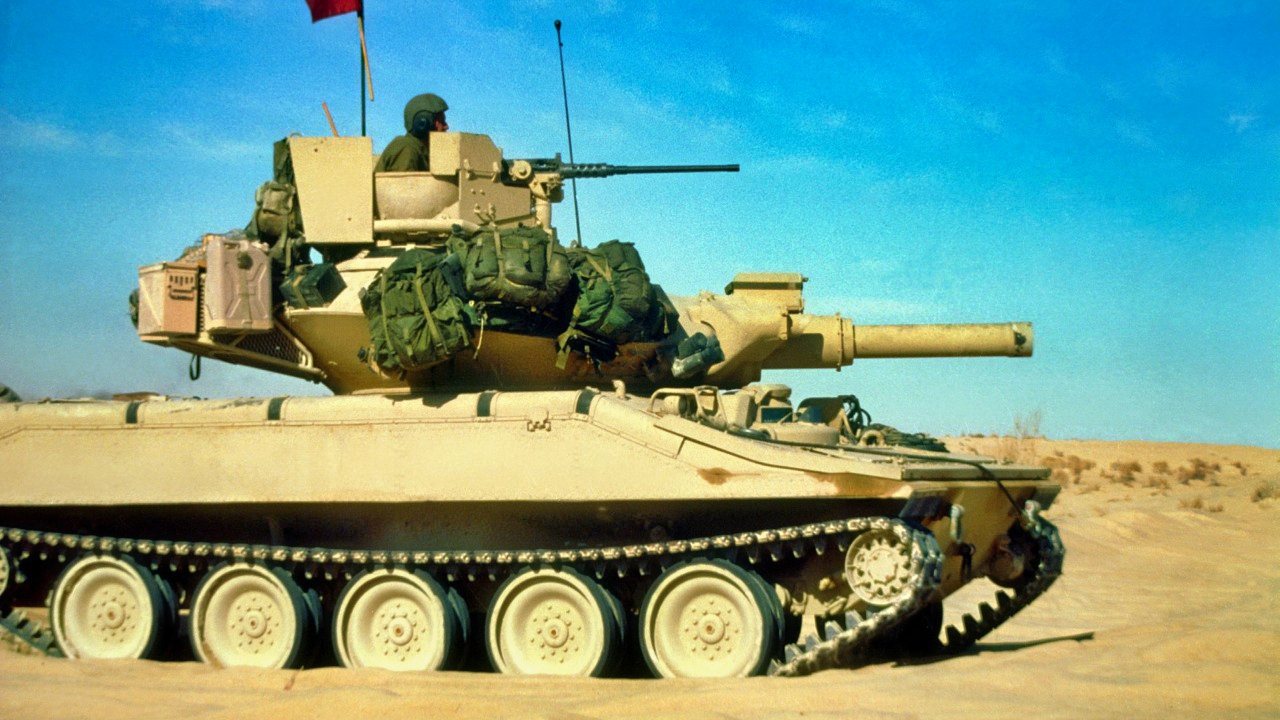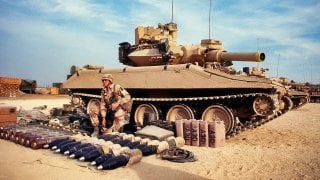M551 Sheridan: The Army Tank 'Bloodied' During the Vietnam War
The M551 Sheridan AR/AAV (Armored Reconnaissance/Airborne Assault Vehicle) was considered a light tank; indeed, it was the Army’s last attempt to build an effective light tank.
Meet the M551 Sheridan: The United States Army has a longstanding tradition of naming its tanks after generals. The current M1 Abrams main battle tank (MBT) was named for Gen. Creighton Abrams of Vietnam War fame. There was the M26 Pershing, named for WWI’s John “Black Jack” Pershing. And there have been more tanks named for WWII icon George S. Patton than you can shake a stick at.
But at least a plurality, if not an outright majority, of American tanks have been named for general officers who served in a war that took place five decades before the tank was even invented: the American Civil War. The one we’re going to discuss right now is the M551 Sheridan.
M551 Sheridan Early History and Specifications
The M551 Sheridan AR/AAV (Armored Reconnaissance/Airborne Assault Vehicle) was considered a light tank; indeed, it was the Army’s last attempt to build an effective light tank.
Designed to be parachute-dropped and to swim across rivers, it was developed between 1959 and 1965, and in operational service from 1969 to 1997. Built by the Cadillac Motor Company, a total of 1,662 were produced.
Specifications of the tank included a length of 20 feet 8 inches, a width of 9 feet 2 inches, a height of 9 feet 8 inches, and a weight of 16.8 tons. Primary armament consisted of an M81E1 152mm main gun and nine MGM-51 Shillelagh antitank guided missiles (the latter weapon has the historic distinction of being the first gun-launched guided missile deployed by the U.S. Army ground forces); these were backed up by a secondary armament tandem of one .30 caliber M73/219 machine gun and one Browning M2 .50 caliber machine gun, aka good ol’ “Ma Deuce.”
The 6-cylinder Detroit Diesel engine produced 300 horsepower and propelled the M551 at maximum speeds of 43 miles per hour on paved roads and 3.6 mph in “swimming” mode, with an operational range of 350 miles. The tank had a four-man crew: commander, gunner, loader, and driver.
Operational Performance
The Sheridan was first “blooded” in combat during the Vietnam War. The Army Historical Foundation assesses the tank’s performance in that conflict thusly:
“The Sheridan demonstrated that it possessed a number of advantages and over the vehicles it replaced. It packed far heavier firepower than the ACAVs. The Sheridans HEAT round was extremely effective against pillboxes and bunkers, while the beehive and canister rounds could mow down waves of enemy infantry. It was faster and more maneuverable than the M48A3. It also had a reliable track system—few Sheridans ever threw a track … The Sheridan, however, also exhibited a number of problems. It was far more vulnerable to mines and rocket propelled grenades (RPGs) than the M48A3 (additional armor was added to the tank’s floor for protection against mines). In some cases, enemy heavy machine gun rounds penetrated the Sheridan’s light aluminum armor. Compounding this problem was the highly combustible caseless main gun ammunition, which if hit, could lead to a catastrophic explosion.”

In spite of those flaws, the M551 went on to serve in combat during Operation Just Cause in Panama in 1989 and during the Persian Gulf War – aka Operation Desert Storm – in 1991. During the former conflict, the Sheridans demonstrated the ability to crash through and over most roadblocks and strong points and participated in the assault on the Commandancia.
In the latter war, Sheridans serving with 3-73 Armor led the 82d Airborne Division’s advance into Iraq; to quote the Army Historical Foundation again, “Company A engaged Iraqi forces at Talil Air Base while the rest of the battalion was used in direct support to eliminate enemy bunkers. With the inactivation of 3-73 Armor in July 1997, the Sheridan ended its service as a front line tank.”

Where Are They Now?
As far as I’ve been able to ascertain, there are at least 30 different venues – museums and military installations alike – with surviving Sheridan tanks on display, all located in the U.S. except for the Ontario Regiment RCAC Museum in Oshawa, Ontario, Canada.
Three Stateside examples are the Airborne & Special Operations Museum in Fayetteville, North Carolina; the Museum of American Armor in Old Bethpage, New York; and the American Heritage Museum in Stow, Massachusetts.

About the Author
Christian D. Orr is a Senior Defense Editor for 19FortyFive. He is a former Air Force Security Forces officer, Federal law enforcement officer, and private military contractor (with assignments worked in Iraq, the United Arab Emirates, Kosovo, Japan, Germany, and the Pentagon). Chris holds a B.A. in International Relations from the University of Southern California (USC) and an M.A. in Intelligence Studies (concentration in Terrorism Studies) from American Military University (AMU). He has also been published in The Daily Torch and The Journal of Intelligence and Cyber Security. Last but not least, he is a Companion of the Order of the Naval Order of the United States (NOUS).


